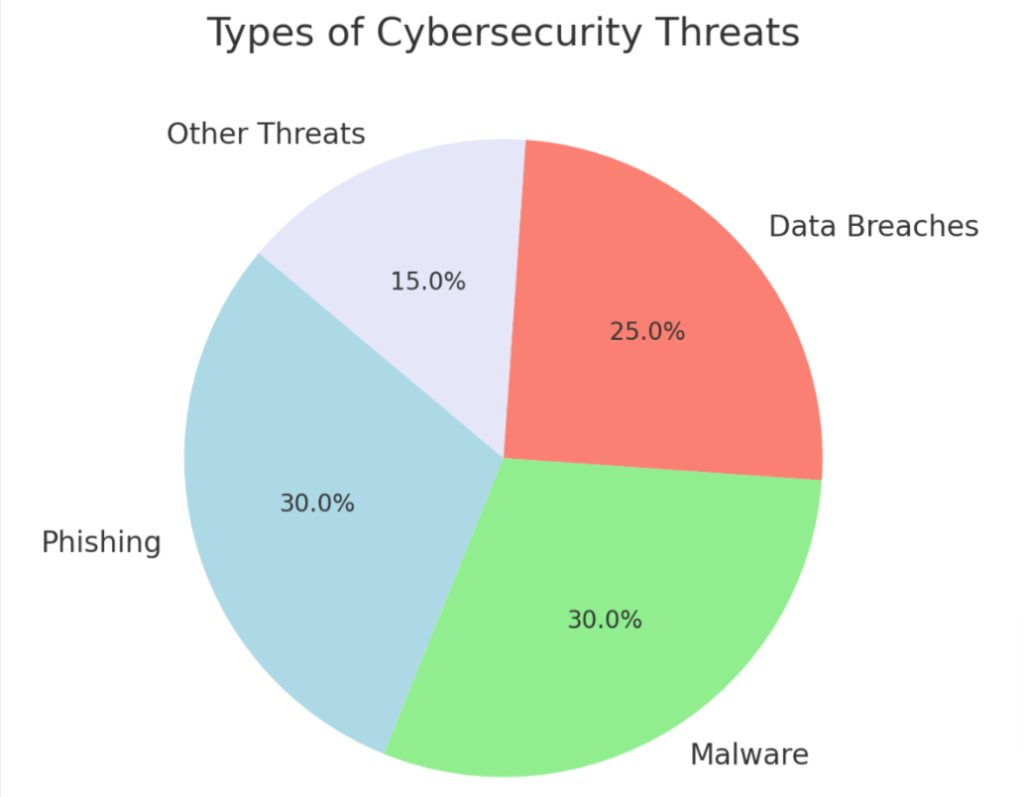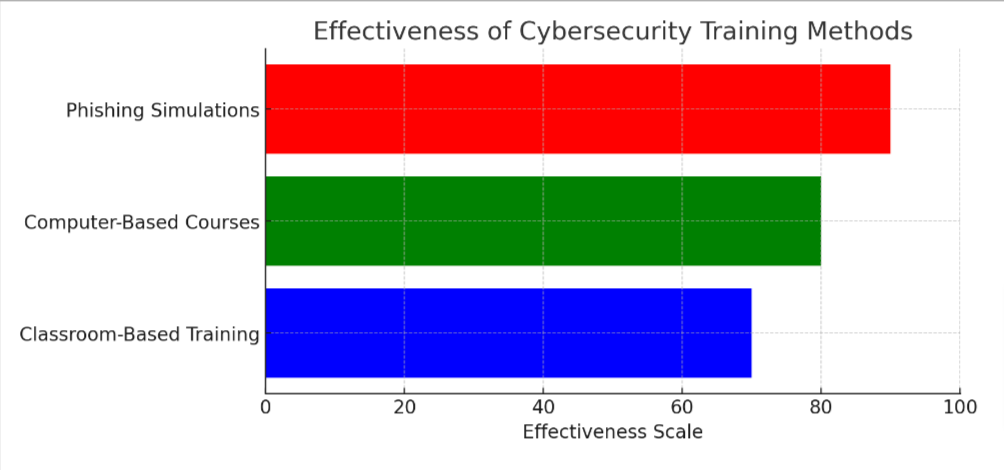Combating Cyber Risks: A Live Chat Professional’s Guide to Security Awareness
Chatting with customers online opens doors to cyber threats. A single security mishap can compromise sensitive information in seconds. Our guide will navigate the digital minefield, providing live chat professionals essential tools for awareness and prevention.
Stay safe, let’s dive in!
Key Takeaways
- Live chat professionals face cybersecurity threats like phishing and data breaches that can compromise customer information.
- Regular training, including classroom and computer – based courses, helps employees recognize and respond to cyber threats effectively.
- Utilizing visual aids, engaging in phishing simulations, and reinforcing knowledge through updates are key to maintaining cybersecurity awareness.
- Implementing multi-factor authentication and keeping software up-to-date are critical technological defenses against cyber attacks.
- Compliance with industry regulations is essential for live chat environments to ensure customer data protection and prevent security breaches.
The Importance of Cybersecurity Awareness for Live Chat Professionals
Live chat professionals need to understand the importance of cybersecurity awareness in order to protect sensitive customer data and prevent potential cyber threats. Maintaining cybersecurity awareness can be challenging, but it is crucial for preventing phishing attacks and data breaches in live chat environments.
Definition and purpose of cybersecurity awareness
Cybersecurity awareness is the knowledge and understanding that individuals have about online security threats and the best practices to prevent them. It involves recognizing potential cyber attacks, such as phishing or data breaches, which can compromise personal and company information if not handled properly.
The primary purpose of this awareness is to equip live chat professionals with the tools they need to identify and safeguard against these threats effectively, ensuring customer interactions are secure.
Arming employees with cybersecurity education turns them into active defenders of their digital workspaces. They learn to spot warning signs of cyber threats early on, understand the consequences of a breach, and adopt preventive measures in their daily operations.
This forms a critical layer in an organization’s overall security framework by reinforcing human vigilance alongside technological defenses – a key aspect for mitigating cybersecurity risks in today’s connected world where live chat services play an integral part.
Challenges in maintaining cybersecurity awareness
Keeping live chat professionals clued in on cybersecurity best practices is no small feat. With the digital landscape constantly evolving, threats become more sophisticated every day, leaving employees struggling to keep up.
It’s easy for them to miss subtle signs of phishing attacks or other cyber risks if their training isn’t current and comprehensive.
Another stumbling block is complacency after initial employee security training sessions. Professionals might feel they’ve learned enough and let their guard down, not realizing that online threats adapt over time.
Engaging staff in regular updates and drills helps maintain a high level of awareness but requires continuous effort and resources from organizations dedicated to data protection and information security awareness.
[Transitioning into the next section about “Cybersecurity Threats in Live Chat Environments”] As we peel back the layers of complexity in preserving this vigilance among team members, let’s delve into specific cyber threats that live chat environments face today.
Cybersecurity Threats in Live Chat Environments
Phishing attacks and data breaches are significant cybersecurity threats in live chat environments. It is crucial for professionals to be aware of these risks and take necessary precautions to protect sensitive information.
Phishing attacks
Phishing attacks often target live chat professionals, luring them into clicking on malicious links or providing confidential information. These deceptive tactics can appear as urgent messages from higher-ups or too-good-to-be-true offers that prompt hasty decisions.
Cyber criminals craft emails and messages to mimic trusted sources, tricking employees into handing over sensitive data or downloading harmful software.
To combat these threats, it’s essential for live chat experts to stay vigilant and skeptical of any unexpected requests for information. They should always verify the authenticity of requests through separate channels before taking action.
Keeping software updated and using strong passwords also helps protect against phishing schemes designed to infiltrate systems and steal valuable company data. Regular cybersecurity awareness training equips live chat teams with the knowledge to spot and avoid these cunning cyber traps.
Data breaches
Data breaches occur when unauthorized individuals gain access to sensitive information. Hackers can exploit vulnerabilities in live chat systems, accessing personal data, financial details, and confidential conversations.
This breach of security poses a significant threat to both customers and the organization itself. Data breaches compromise trust, tarnish reputation, and could result in legal consequences for failing to protect private information.
To counter data breaches, it is essential for live chat professionals to implement robust security measures that safeguard customer data. Encryption protocols, stringent access controls, and regular system audits are crucial steps in preventing unauthorized access to sensitive information.

Strategies for Preventing Cybersecurity Threats
Creating a culture of security and bolstering technological defenses are essential strategies for preventing cybersecurity threats in live chat environments. Meeting compliance requirements is also crucial in ensuring data protection and online security.
Creating a culture of security
To foster a culture of security, start by promoting open communication among employees. Encourage them to report any suspicious activities or potential security threats they encounter while engaging in live chat support.
Establish clear guidelines and protocols for handling sensitive information and sharing data within the organization.
Incorporate regular cybersecurity training sessions into the company’s ongoing professional development programs. This will ensure that all live chat professionals are equipped with the knowledge and skills necessary to identify, prevent, and respond to cyber threats effectively.
Bolstering technological defenses
Cybersecurity threats are a growing concern for live chat professionals. Bolstering technological defenses is crucial in safeguarding against these threats. Here are some strategies to strengthen technological defenses:
- Implement multi – factor authentication to enhance login security and protect against unauthorized access.
- Regularly update and patch software to address vulnerabilities and ensure the latest security features are in place.
- Utilize encryption technology to secure sensitive data transmitted during live chat interactions, safeguarding it from potential breaches.
- Deploy advanced intrusion detection systems to monitor network traffic and detect any suspicious activities or unauthorized access attempts.
- Integrate robust endpoint security solutions to protect devices used for live chat services from malware, phishing attempts, and other cyber threats.
- Employ secure coding practices when developing and maintaining live chat platforms to mitigate the risk of exploitation by cyber attackers.
- Conduct regular cybersecurity assessments and audits to identify weaknesses in the technological infrastructure and address them promptly.
- Invest in threat intelligence tools to stay informed about emerging cyber threats and proactively defend against potential attacks.
Meeting compliance requirements
To ensure the security of live chat environments, meeting compliance requirements is crucial. Implementing robust cybersecurity measures not only protects sensitive data but also ensures adherence to industry regulations and standards.
By diligently following compliance protocols, live chat professionals can demonstrate their commitment to upholding information security best practices and mitigating cyber threats effectively.
To meet compliance requirements, it’s essential for organizations to regularly review and update their cybersecurity policies and procedures. This includes conducting thorough risk assessments, implementing secure access controls, maintaining audit logs, and promptly addressing any identified vulnerabilities or gaps in security measures.
Implementing Cybersecurity Awareness Training for Live Chat Professionals
Implementing cybersecurity awareness training for live chat professionals is crucial in equipping them with the knowledge and skills to prevent cyber threats. Various methods such as classroom-based training, visual aids, phishing simulations, and computer-based courses can be used to effectively educate and reinforce security practices.

Classroom-based training programs
Classroom-based training programs provide an opportunity for live chat professionals to engage in interactive learning. These programs offer hands-on practice with cybersecurity tools and techniques, allowing participants to apply their knowledge in real-time scenarios. In these sessions:
- Instructors can demonstrate phishing simulations, teaching employees how to recognize and respond to suspicious emails.
- Live chat professionals learn about the latest cyber threats and best practices for data protection.
- Role – playing exercises help staff understand how to handle security incidents and breaches effectively.
- Scenarios are presented where employees can identify potential security risks and develop strategies for mitigating them.
- Training materials may include visual aids such as infographics and diagrams illustrating common cyber attacks and preventive measures.
Visual aids
Visual aids are essential tools for enhancing cybersecurity awareness among live chat professionals. Infographics, charts, and diagrams can effectively convey complex concepts related to cybersecurity in a visually appealing manner.
Using visual representations of cyber threats and best practices can help employees understand the importance of online security and remember key information more easily.
Additionally, incorporating videos and animations into training sessions can provide engaging demonstrations of potential cybersecurity threats like phishing attacks and data breaches.
Phishing simulations
To further reinforce cybersecurity awareness, phishing simulations can be immensely beneficial for live chat professionals. This form of training involves creating realistic scenarios to imitate phishing attacks, enabling employees to experience and recognize the tactics used by cybercriminals.
- Simulated Phishing Emails: Employees receive realistic-looking fake phishing emails that mimic actual threats to test their ability to identify and report suspicious messages.
- Interactive Training Modules: Utilize interactive modules that simulate real-world scenarios, providing hands-on practice in recognizing and responding to phishing attempts.
- Behavioral Analysis: Implement tools that track employee responses to simulated phishing attempts, allowing for targeted training based on individual performance.
- Reporting Mechanisms: Encourage employees to report any suspicious emails by providing easy-to-use reporting mechanisms within the simulation platform.
- Feedback and Analysis: Offer detailed feedback on employee performance in identifying and handling simulated phishing attacks, guiding them towards improving their awareness and response skills.
- Ongoing Simulation Campaigns: Conduct regular phishing simulations to keep cybersecurity at the forefront of employees’ minds and continuously enhance their ability to thwart real threats.
Computer-based courses
Live chat professionals can benefit from computer-based courses, providing structured learning on cybersecurity awareness. These courses are convenient and offer flexible scheduling. They cover topics such as data protection, cyber attacks, and information security, allowing professionals to deepen their understanding of potential threats.
With interactive modules and real-world scenarios, they engage learners in practical situations to enhance their problem-solving skills. The courses also include assessments to measure comprehension and retention of key concepts, ensuring that participants can apply their knowledge effectively.
Live chat professionals should consider integrating computer-based courses into their ongoing training programs to stay updated on cybersecurity best practices.
Regular reinforcement and updates
Regular reinforcement and updates are crucial for keeping live chat professionals on top of cybersecurity threats. To ensure that employees stay vigilant and informed, consider the following strategies:
- Monthly cybersecurity workshops to discuss the latest cyber threats such as phishing attacks and data breaches, reinforcing best practices, and sharing real-world examples.
- Bi – annual cybersecurity assessments to evaluate employees’ knowledge and identify areas requiring further training or reinforcement.
- Quarterly updates on new cybersecurity policies, tools, and technologies to equip employees with the most current information for safeguarding online interactions.
- Ongoing communication through email newsletters, posters, and company – wide announcements to keep cybersecurity at the forefront of employees’ minds.
- Incorporating relevant cybersecurity topics into regular team meetings or one-on-one sessions to provide continuous education and discussion opportunities.
Conclusion
In conclusion, cybersecurity awareness is crucial for live chat professionals to combat cyber threats effectively. Training programs and visual aids can help in educating employees on recognizing and preventing potential security risks.
By implementing strong prevention strategies and staying updated with the latest security measures, live chat professionals can play a vital role in safeguarding data from online threats.
With a proactive approach to cybersecurity education and risk mitigation, live chat professionals can contribute to maintaining information security within their organizations.

